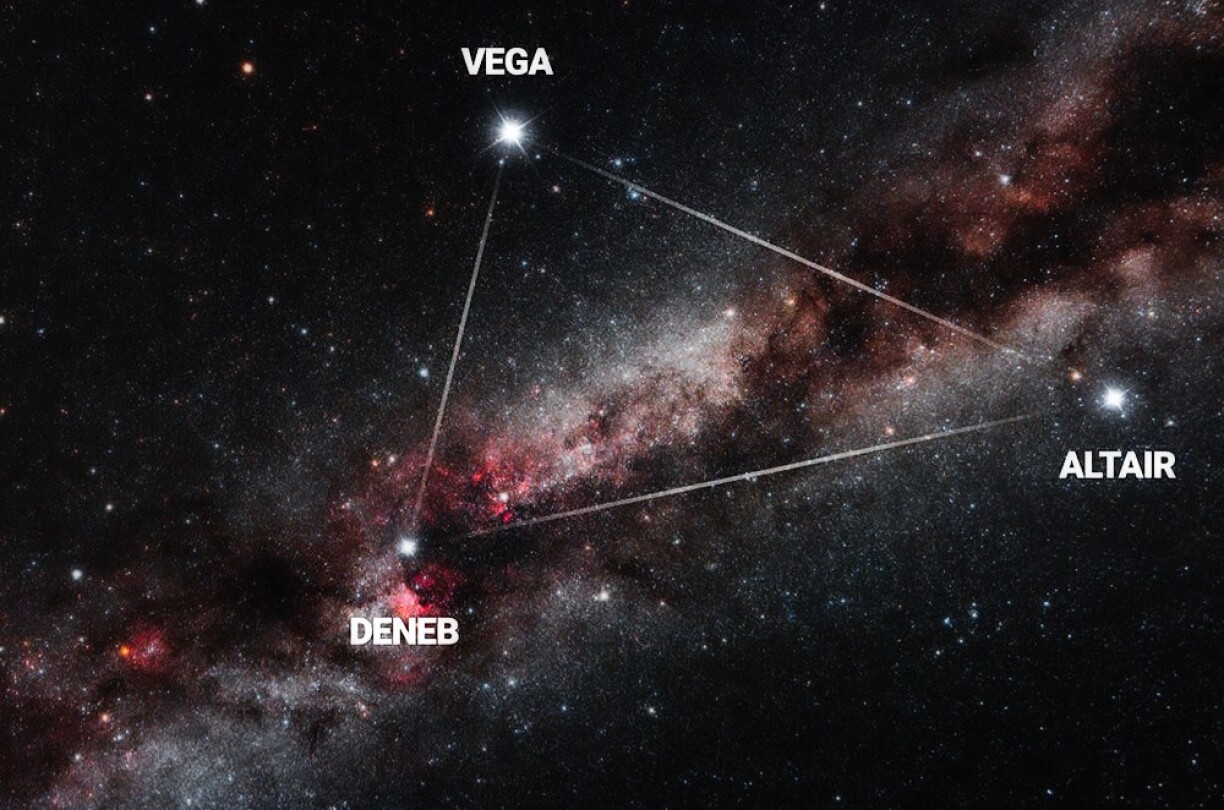
Warm evenings, late sunsets, and the dominance of summer constellations make this a prime time to look up. But what most of us are truly waiting for this month is the return of the Perseids, one of the most anticipated meteor showers on the astronomical calendar.
The month begins under the growing light of the Moon, which reaches full phase on Saturday 9 August at 9.57pm. Known as the Sturgeon Moon, it will shine brightly and appear prominent for several nights, reducing visibility for fainter deep-sky objects and dimmer meteors. Still, its silvery glow has its own timeless charm and sets the stage for what’s to come.
Venus and Jupiter, the two brightest planets, will share the sky in the constellation Gemini, coming within half a degree of each other just before sunrise. The brilliant planet duo will sit close above the eastern horizon: Venus glowing intensely and Jupiter just above. This close approach will occur in tandem with the Perseid meteor shower, creating a spectacular pre‑dawn window for observers. Keep your cameras ready!
The most awaited show begins in the second week of the month, when the Perseid meteor shower reaches its peak. Active from mid-July to late August, the Perseids are famous for their bright, fast-moving meteors that often leave behind persistent greenish trails across the sky.
This year, the peak is expected during the night of 12 to 13 August. While an 84%-lit waning gibbous Moon will brighten the sky during the peak hours, observers can still expect a decent display, particularly in the early morning, when the radiant climbs higher and the Moon dips closer to the horizon.
Many Perseid meteors are bright enough to pierce through moonlight, and even a partial view is well worth the effort. The radiant lies in the constellation Perseus, which rises in the northeast late at night, but meteors will appear all over the sky, not only near the radiant point.
Later in the month, skies darken significantly. The New Moon on 23 August marks the return of ideal conditions for observing faint deep-sky objects and capturing the richness of the Milky Way. Even though the peak of the Perseids will have passed, lingering activity often continues for several nights, and under a dark sky you may still catch one or two bright stragglers.
Beyond the Perseids, August delivers a host of other celestial delights, from planetary highlights and star-filled constellations. It’s an excellent month for sky-watching in Luxembourg.
Saturn
Saturn continues to brighten throughout the month as it approaches opposition (when the Earth is positioned directly between the Sun and a planet) in mid September. It rises earlier each evening, becoming increasingly well-positioned for observation. Its steady golden glow makes it easy to spot with the naked eye, and a telescope reveals its stunning ring system, an unforgettable experience for any observer.
Jupiter
Jupiter continues to shine in the pre-dawn hours and climbs higher in the eastern sky each morning. By late August, it becomes a brilliant beacon just before sunrise. Even with binoculars, stargazers can spot up to four of its Galilean moons appearing as tiny points of light alongside the gas giant.
Mars, Venus, and Mercury
These planets remain difficult to observe this month. Mars is low on the horizon after sunset and fades quickly from view, while Venus and Mercury are largely hidden in the Sun’s glare.
Cygnus
High overhead by late evening, Cygnus, the Swan, soars along the plane of the Milky Way. Its brightest star, Deneb, marks one corner of the Summer Triangle. The constellation’s graceful shape and star-filled regions make it a rewarding target for observers, even without optical aid.
Lyra
Compact and brilliant, Lyra is home to Vega, one of the brightest stars in the northern sky and the key vertex of the Summer Triangle. Within its bounds lies the Ring Nebula (M57), a tiny planetary nebula that appears as a faint smoke ring through telescopes.
Aquila
To the south of Lyra and Cygnus lies Aquila, the Eagle, anchored by Altair, the third star of the Summer Triangle. Its shape is easy to trace and adds symmetry to this seasonal trio of constellations.
Sagittarius and Scorpius
Still visible in the southern sky after sunset, Sagittarius and Scorpius are rich in star clusters and nebulae. Sagittarius points towards the galactic centre, hidden behind clouds of interstellar dust. Binoculars will reveal bright regions like the Lagoon Nebula (M8) and Trifid Nebula (M20), an incredible view under dark skies. Scorpius, meanwhile, curves elegantly
across the southern sky with its red supergiant Antares glowing like a fiery heart.

The Summer Triangle
Not a constellation but an asterism, the Summer Triangle is formed by the bright stars Vega, Deneb, and Altair. It remains high in the sky throughout August, acting as a stellar landmark that anchors many of the season’s most prominent constellations. Once you know where to look, it’s hard to miss, give it a try!
To truly enjoy a meteor shower like the Perseids, all you really need is a relatively dark sky, some patience, and a comfortable place to sit. The best way to observe them is simply with your eyes. Using a telescope or binoculars, in fact, will only reduce your field of view as meteors streak across wide areas of the sky.
So, find a quiet spot away from artificial lights and give your eyes time to adjust to the darkness, ideally 15 to 20 minutes. A blanket on the ground or a reclining chair will make a big difference, especially if you plan to stay out for a while. Bring a thermos or a glass of wine to share with someone you love, and just look up.